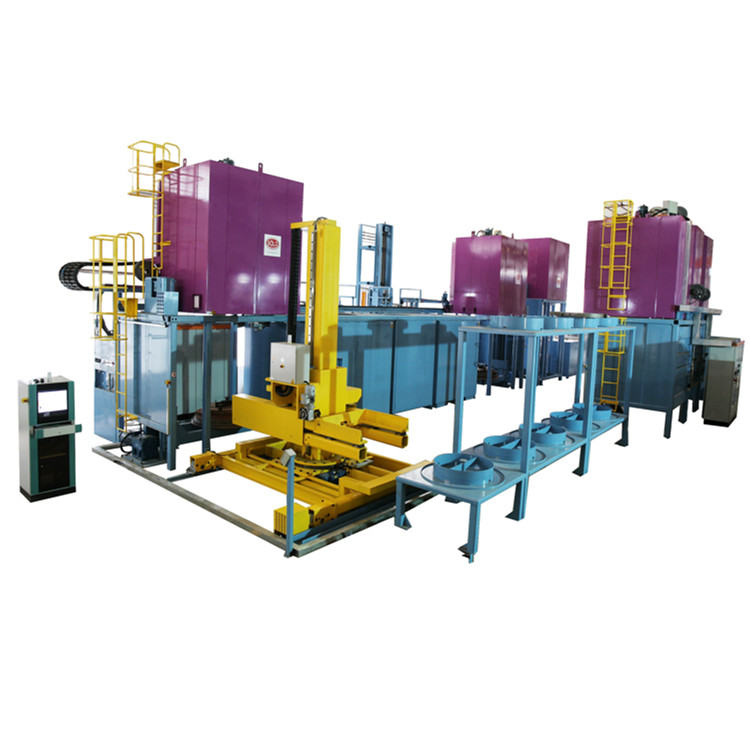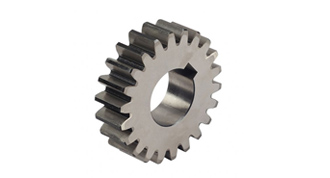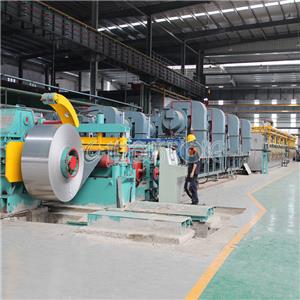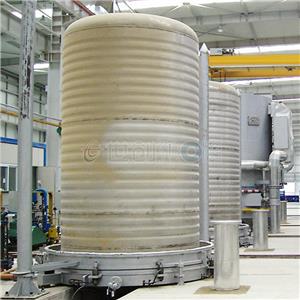Commonly used materials and heat treatment methods for gears
Commonly used materials and heat treatment methods for gears
In order to ensure the reliability of the gear work and increase its service life, the material of the gear and its heat treatment should be selected according to the working conditions and the characteristics of the material.
The basic requirements for gear materials are: the tooth surface should have sufficient hardness and wear resistance, and the tooth core should have sufficient toughness to prevent various failures of the tooth surface. At the same time, it should have good cold and hot processing technology. In order to meet the various technical requirements of gears.
Commonly used gear materials are various grades of high-quality carbon structural steel, alloy structural steel, cast steel, cast iron, and non-metallic materials. Generally use forging or rolled steel. When the size of the gear structure is large and the wheel blank is not easy to forge, cast steel can be used; for open low-speed transmission, gray cast iron or ductile iron can be used. Steels with better comprehensive performance should be selected; high-speed gears are prone to pitting on the tooth surface, and materials with high tooth surface hardness should be selected; gears subject to impact load should be selected from materials with good toughness. For high-speed, light-load and low-noise gear transmissions, non-metallic materials, such as cloth bakelite, nylon, etc. can also be used. Commonly used gear materials and their mechanical properties are listed in the table below.

The heat treatment methods of steel gears mainly include the following:
●Surface hardening
Surface hardening is often used for medium carbon steel and medium carbon alloy steel, such as 45 and 40Cr steel. After surface quenching, the tooth surface hardness is generally 40~55HRC. It is characterized by high anti-fatigue pitting corrosion and high bonding resistance. Good wear resistance; because the tooth center is not hardened, the gear still has enough toughness to withstand small impact loads.
●Carburizing and quenching
Carburizing and quenching are commonly used in low-carbon steel and low-carbon gold-containing steel, such as 20, 20Cr steel and so on. After carburizing and quenching, the tooth surface hardness can reach 56~62HRC, while the gear core still maintains high toughness. The gear teeth have high bending strength and tooth surface contact strength, good wear resistance, and are often used for impact loads. gear drive. After the gear is carburized and quenched, the gear teeth are deformed and should be ground.
●Nitriding
Nitriding is a kind of surface chemical heat treatment. No other heat treatment is required after nitriding, and the tooth surface hardness can reach 700-900HV. Due to the high hardness of the nitriding gear, low process temperature and small deformation, it is suitable for internal gears and gears that are difficult to grind. It is often used for nitriding steels containing lead, molybdenum, aluminum and other alloy elements, such as 38CrMoAl.
●Qualification
Quenching and tempering is generally used for medium carbon steel and medium carbon alloy molybdenum, such as 45, 40Cr, 35SiMn steel and so on. The hardness of the tooth surface after quenching and tempering is generally 220~280HBS. Because the hardness is not high, the gear tooth finishing can be carried out after heat treatment.
●Normalizing
Normalizing can eliminate internal stress, refine grains, and improve mechanical properties and cutting performance. Gears with low mechanical strength requirements can be normalized with medium carbon steel, and gears with large diameters can be normalized with cast steel.
According to the hardness of the tooth surface after heat treatment, gears can be divided into soft tooth surface gears (≤350HBS) and hard tooth surface gears (>350HBS). Generally required gear transmission can adopt soft tooth surface gears. In order to reduce the possibility of gluing and make the lifespan of the paired large and small gears equal, the hardness of the tooth surface of the pinion gear is usually 30-50HBS higher than the hardness of the tooth surface of the large gear. For high-speed, heavy-duty or important gear transmissions, hard-tooth surface gear combinations can be used, and the tooth surface hardness can be roughly the same.
The service life and reliability of the transmission gear mainly depend on the fatigue resistance of the gear, that is, the bending fatigue life and contact fatigue life of the gear. In traditional gear manufacturing, most transmission gears are treated with carburizing and quenching heat treatment. With the development of industrial technology, the demand for high-power, high-speed and high-reliability gears is increasing. Traditional carburizing and quenching heat treatment processes require high-performance gears. Due to internal oxidation and large distortion in the carburizing process, the quality is not good. Stability, accuracy and performance are difficult to guarantee. As a result, gear ion nitriding heat treatment is widely used, especially in the precision gear industry, and ion nitriding heat treatment is widely used in gear manufacturing.
The ion nitriding of the gear reduces the gear grinding process and saves the cost. At the same time, the ion nitriding heat treatment can effectively ensure the requirements of the gear infiltration layer depth. Ion nitriding has small deformation, high hardness and uniform nitriding on both sides of the gear. Therefore, in recent years, the gear manufacturing industry, especially the precision gear industry, has gradually used ion nitriding heat treatment technology to replace gas nitriding heat treatment and or gas carburizing quenching heat treatment.

Guangdong Strong Metal Technology Co., Ltd. can provide customers with chemical heat treatment (carburizing heat treatment, nitriding heat treatment, carbonitriding heat treatment), vacuum heat treatment, plasma heat treatment (ion nitriding, ion nitrocarburizing (soft nitriding), ion nitriding) +Post-oxidation), conventional heat treatment (including cryogenic treatment) and other four major areas of heat treatment processing services. We have rich experience in gear heat treatment. If necessary, please call +86136 423 19352 or contact online customer service.




